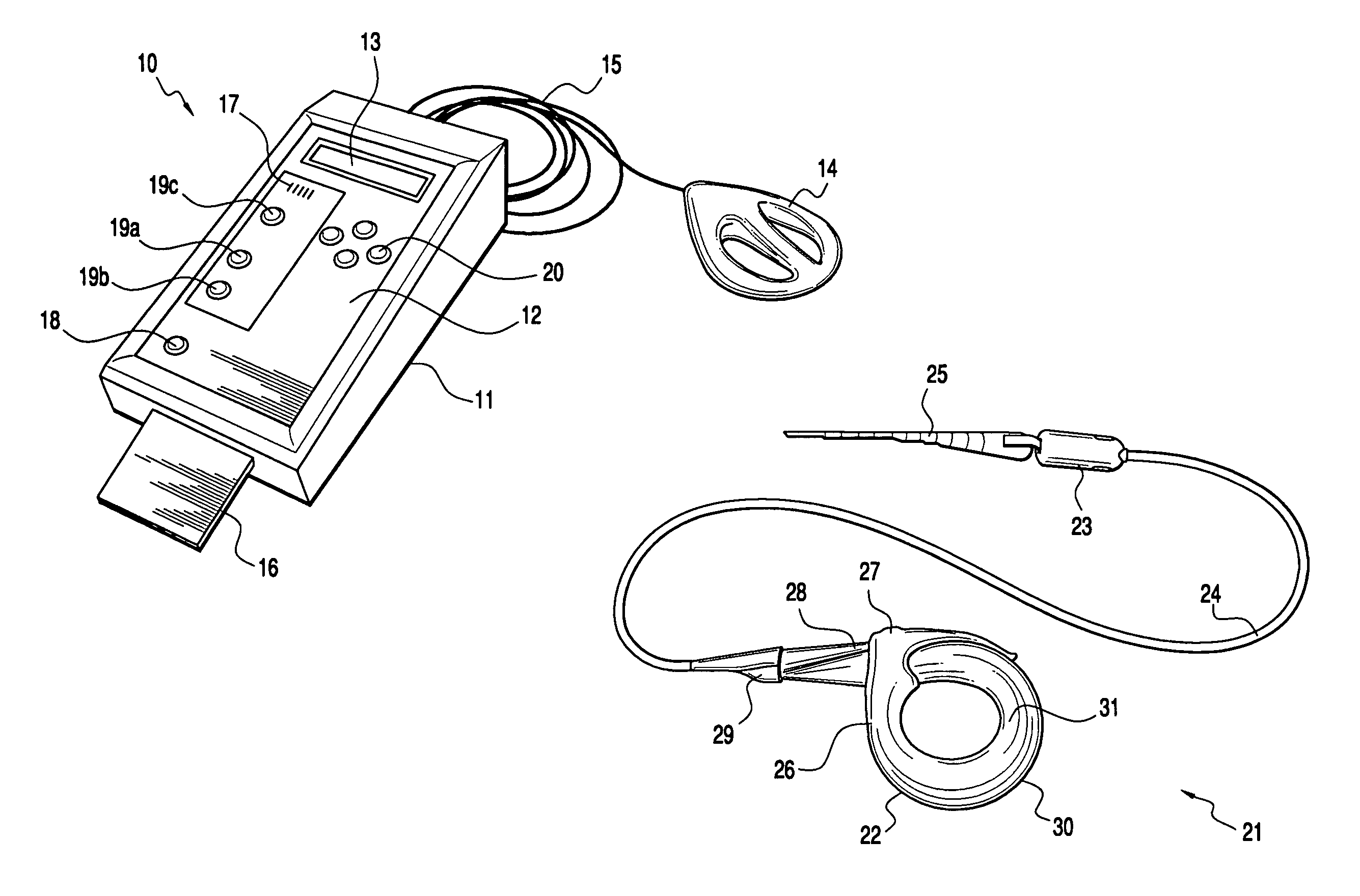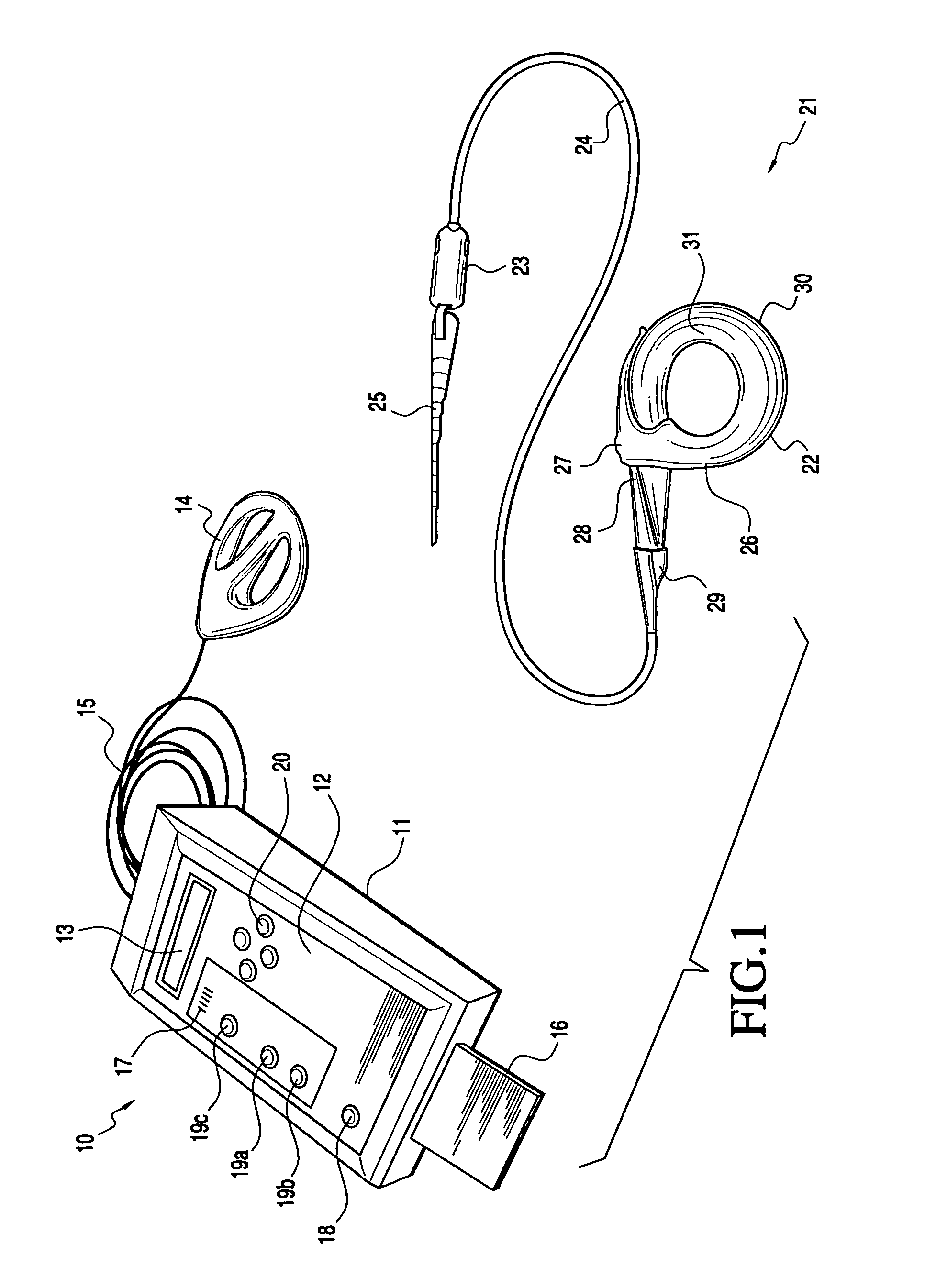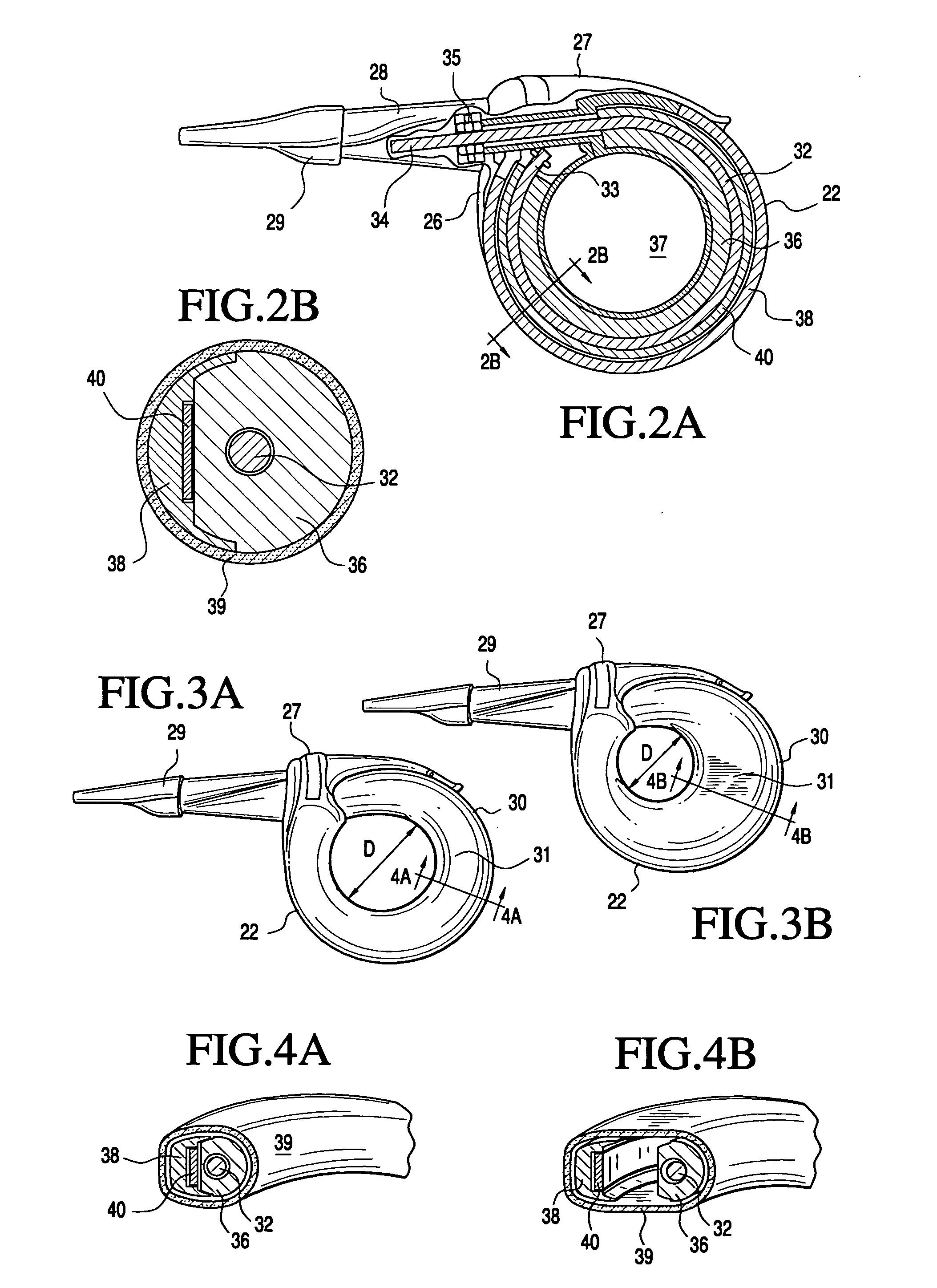Obesity is well recognized as a serious health problem, and is associated with numerous health complications,
ranging from non-fatal conditions to life threatening chronic diseases.
According to the
World Health Organization, the non-fatal, but debilitating
health problems associated with obesity include respiratory difficulties, chronic musculoskeletal problems,
skin problems and
infertility.
Such intervention not only mitigates the myriad
health problems arising from
overweight, but may reduce the risk of early death of the patient.
Morbidly obese patients as a group are poorly adapted to attain sustainable long-term
weight loss using non-surgical approaches, such as strict diets combined with exercise and behavioral modification, even though such methods are acknowledged to be the safest.
The RYGB procedure is both restrictive, in that the small pouch limits
food intake and malabsorptive, in that the bypass reduces the amount of calories and nutrients the body absorbs.
While the device described in the Kuzmak patent is capable of providing satisfactory results, it nevertheless suffers from a number of drawbacks.
The
injection port is the source of many of the problems encountered with the hydraulic gastric bands, including infection, damage to the tube due to imprecise
puncturing with the needle, discomfort to the patient created by the port and difficulty in locating the port (often necessitating the use of x-
ray to determine the location and orientation of the port).
In addition, although the
injection port makes it possible to make limited adjustments to the
diameter of the ring without major surgical intervention, installation of the band may be accompanied by intolerance phenomena, such as
vomiting.
This drawback may arise from various causes, including too great a reduction in the diameter of the
stoma, ineffective action of the band due to too great a
stoma diameter, obstruction, infection or local or general
inflammation.
In such cases, the previously-implanted band must be
cut and either removed or replaced, during operations that are difficult to carry out, difficult for the patient to tolerate and costly.
Likewise, the introduction of a battery within the patient's body confers an undesirable degree of
fragility upon the
system.
Although the
system described in the Dargent patent overcomes problems associated with injection ports used in previously-known hydraulically-actuated bands and with systems requiring implantable batteries, it too is expected to suffer from a number of drawbacks.
Further, as shown in the drawings of that patent, when the band contracts, ripples form in the interior surface of the band that may cause
inflammation or abrasion of the
stomach.
In addition, it has been observed that within a few weeks of implantation of a gastroplasty band,
fibrous tissue tends to overgrow and encapsulate the band.
It is expected that, as in Dargent, where the exterior of the diameter of the band contracts upon actuation of the motor, such
fibrous tissue may interfere with proper functioning of the device.
Finally, while the band described in Dargent is flexible, it has no ability to stretch, for example, as may be needed to accommodate convulsive motions of the
stomach, e.g., during
vomiting, and consequently may lead to patient intolerance problems.
All of the foregoing surgical techniques involve major
surgery and may give rise to severe complications.
As previously noted, however, that band is expected to suffer from the same drawbacks as previously-known hydraulic gastric bands.
In addition, that patent provides no teaching or suggestion as to how non-hydraulically controlled gastic bands could be configured for laparoscopic implantation.
For example, the patent provides no teaching that would enable a clinician to adapt the non-hydraulic device described in Dargent for laparoscopic implantation.
 Login to View More
Login to View More  Login to View More
Login to View More 


